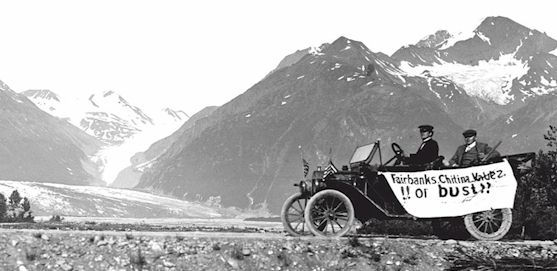This Week in Alaska History: September 29 – October 5 - Walter Hickle Greenlights Pipeline
- Alaska Means Business

- Sep 29
- 2 min read
This Week in Alaska History: September 29 – October 5
From daring engineering feats in the frozen north to catastrophic spills that tested the state's resilience, here's a look back at some pivotal moments that shaped Alaska during this stretch of early fall.
September 29, 1849 – Frederick Schwatka, the renowned explorer who would later map vast swaths of Alaska's uncharted wilderness, was born in Galena, Illinois. Schwatka's expeditions in the late 1800s, including the first complete traverse of the Yukon River, helped demystify the territory for outsiders and fueled the gold rush era.
September 29, 1974 – In a milestone for Arctic connectivity, two bulldozer crews linked up at the south fork of the Koyukuk River, finishing the 360-mile Dalton Highway gravel overlay. This marked the completion of the first U.S. road to cross the Arctic Circle, opening remote northern Alaska to trucks hauling supplies for the booming oil industry.
October 1, 1899 – The All-American Mail Route kicked off operations from Valdez to Circle City and points along the Yukon River, revolutionizing communication in the territory. Before this, mail relied on dog sleds and steamers; the new route slashed delivery times and supported the influx of prospectors during the Klondike Gold Rush.
October 2, 1969 – U.S. Interior Secretary Walter Hickel greenlit the right-of-way for the Trans-Alaska Pipeline, a 800-mile engineering marvel from Prudhoe Bay to Valdez. This approval paved the way for the project's construction amid heated debates over environmental impacts, ultimately transforming Alaska's economy with billions in oil revenue.

October 4, 2001 – Environmental disaster struck when Daniel Carson, a disgruntled pipeline technician, fired shots into the Trans-Alaska Pipeline north of Fairbanks, spilling about 260,000 gallons of crude oil—the largest such breach in the line's history. The incident halted operations for days, cost millions in cleanup, and highlighted vulnerabilities in critical infrastructure.
October 5, 1913 – A ferocious storm battered Nome, causing an estimated $1 million in damage (over $30 million today) to docks, buildings, and ships. Waves up to 30 feet wrecked the beachfront, underscoring the raw power of Bering Sea weather and the fragility of gold rush boomtowns.

.png)



